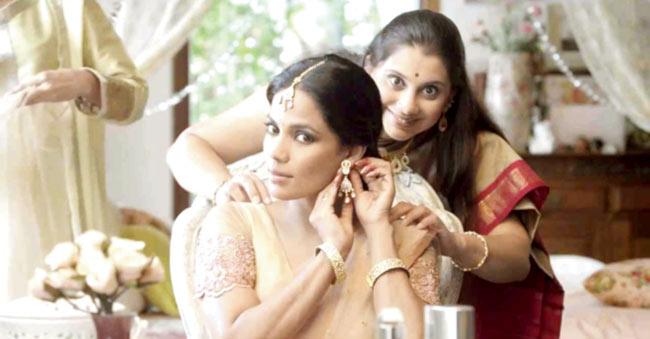There are times when advertising takes a stand on burning social issues. Then, there are instances where they stir up a hornet’s nest. Is Indian advertising truly responsible or does it simply tackle social issues to garner eyeballs? sunday mid-day takes a close, hard look

Social media is the buzzword. An idea can go viral in seconds, courtesy Twitter, Facebook, Instagram and the like, and turn into a national debate within minutes. A single tweet or a blog can be replicated in a short span of time. It’s virtually (literally speaking) impossible to contain it. If on one hand, the trend is encouraging as it allows you to be a part of a phenomenon and possibly bring about a positive change in society, it has an adverse side, too. Take the instance of a fairness cream endorsed by Yami Gautam. The actress faced the ire of netizens for endorsing the skin lightening product. Memes which replaced her name with everything ‘fair’, ridiculed her choice of endorsement.

In the eye of a storm: Some advertisements in the recent past have caused a stir like the recent Airtel ad, which people felt propagated a regressive idea. PIC COURTESY/AIRTEL
ADVERTISEMENT
A bold wave
There has been a sudden surge of commercials dealing with social issues over the past few years. Some creative content is being lauded for throwing light on issues that will bring about a positive change in societal attitudes towards taboo topics. Like the Tanishq ad which highlighted widow remarriage last year. The ad caught a lot of attention on social media and was shared widely on Facebook and Twitter.
It also sparked a conversation on Twitter, prompting celebrities and politicians to weigh in. Parliament member and industrialist, Naveen Jindal praised the choice to feature a bride with a ‘dusky’ skin tone and the non-traditional marriage.
Similarly, the ‘hawa badal de’ campaign by Havell’s fans had commercials talking about a woman retaining her
surname after her marriage and the family asking the maid to join them at the dinner table.
The simple yet powerful stories captured a lot of attention and received more than 20,000 YouTube hits together. Likewise, the Tata Tea ‘Jaago re’ campaign was also well-received.

This popular home linen ad spoke of divorce as a new beginning and was conceptualised by Abhinav Tripathi, creative head of Mccann
Contentious content
On the other hand, there have been advertisements that have stirred a hornet’s nest. The recent example is that of the Airtel ad, which features a female boss ordering her husband, also her subordinate, to complete a project by working overtime but comes home to cook a sumptuous meal to invite him back home. A section of people felt it was showcasing a regressive idea of a woman’s role being confined to a home-maker even though she may call the shots in her professional life. Social networking sites were flooded with opinions, which were not exactly flattering. In this context, fingers were pointed at advertising agencies alleging them of raking up contentious issues only to get public attention.
Prahlad Kakkar, veteran adman, begs to differ, saying: “I don’t think the Airtel ad is propagating a regressive idea at all. It is simply reflecting a reality in the Indian context — a woman may be at an enviable position at work but she has the dual responsibility of looking after her home, too. They are unlike men who simply come home from work, curl up on the couch, watch television and expect to be served food. Otherwise too, it’s a sweet idea about a wife who cooks a meal to pamper her husband who is working for long hours. What’s the harm in that?”
Discussing advertisements picking up subjects that cause debates, he contends, “We choose content that is based on majority thinking. After all, it’s our job to grab eyeballs, isn’t it? The very fact that it is being discussed on social media means it has generated interest. It is akin to the Bombay Dyeing ad where the girl tells her father ‘Aapne divorce liya hai, sanyaas nahi’, which is outright bold. It was not propagating a marital separation but the fact that divorces are happening around us but it does not mean the end of your life.”

Learning a lesson: The jewellery brand ad which spoke of widow remarriage was a revolutionary concept
Cultural awakening
Suraja Kishore, executive planning director at McCann Worldgroup, seconds Kakkar’s opinion. “When a culture is in transition, brands talk about new traditions. They endorse new and progressive ways of living. Indian culture is in transition. There are contrasting value systems existing at the same time. Brands picking on codes that is relevant to their point of view gets its share of attention like the Bombay Dyeing ad which was conceptualised by our creative head Abhinav Tripathi,” he points out.
However, he does agree that agencies should not pick topics that can dent the value system of society. He says, “Marketers and advertising professionals must not rake up a controversy for the sake of it. Such an approach gets you more negative word of mouth than positive brand scores. Lip service to social issues make brands come across as an opportunist and clever entity. Hence, they get negative publicity. With social media, the reaction is widespread and instant too. Like the Tanishq commercial where a child does pheras along with her mom. In a nation where widowed and divorced women are treated as outcasts, the theme of a woman’s second marriage to a man, who treats both her and her daughter with love and respect, was revolutionary. Same was the case with the Tata Tea ‘Jaago re’ ad where the tagline is ‘Don’t just wake up, awaken’. These campaigns indulge in a progressive discourse.”
With social media, the impact is instant and far reaching too, “Millions of people are constantly sharing jokes, news, trivia on social media therefore it becomes an effective reach media for brands,” he adds.
A mirror to society
Veteran adman, Kailash Surendranath has an interesting take on content going viral. He says, “Why just social networking sites, even a BBM status can become a topic of discussion. Though I seriously feel that the content should be worth its salt to go viral. One song or a tagline should create that magic. All advertisers vie for that, it’s our job. Why would we or even the discerning audience remember and discuss a run-of-the-mill concept? Recently, the Chings ad which had Ranveer Singh dancing and singing ‘I am Ranveer Ching’, was interesting. People felt they were watching a movie. It was a huge hit on YouTube.”
Provoking thought
Advertising concepts are tools that help people evolve their thought process. Kakkar says, “People should realise is that Indian society has changed tremendously in the last decade as compared to the last 100 years. One can’t go on clinging to age-old concepts. If one is not progressive, he will perish. People who are living in the 15th century have to understand that this is the 21st century where you can survive only if you embrace these changes. These ads tell you how to survive.”

I seriously feel that the content should be worth its salt to go viral. Why would we or the discerning audience discuss a run-of-the mill concept?
— Kailash Surendranath, veteran adman
 Subscribe today by clicking the link and stay updated with the latest news!" Click here!
Subscribe today by clicking the link and stay updated with the latest news!" Click here!







